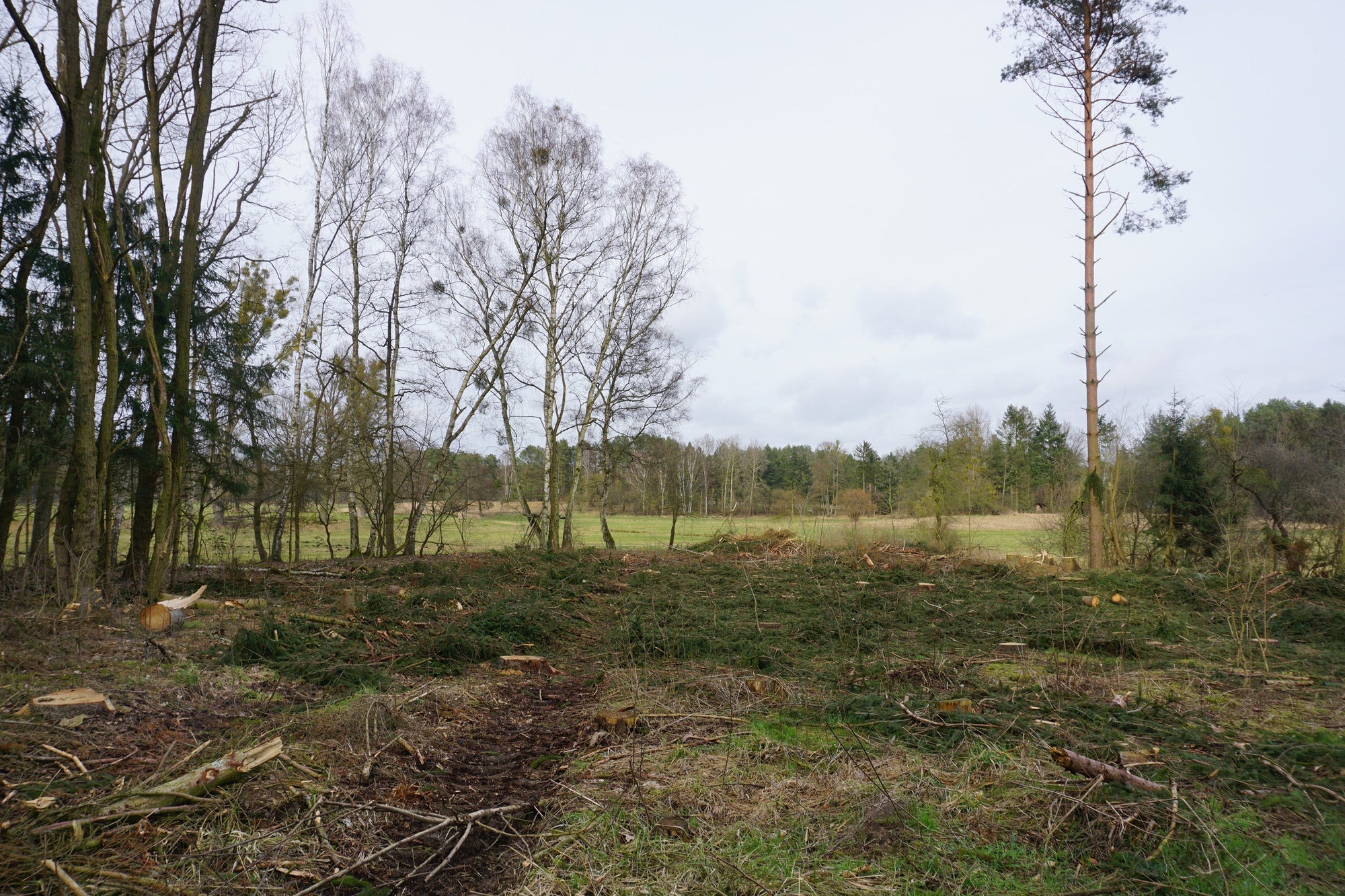
In 2022, ekomia supported the Hoffnungstaler Stiftung Lobetal in Bernau in the climate-resilient reforestation of a forest.
Challenges for German Forests Due to Climate Change
For years, forests in Germany have suffered from persistent drought and high temperatures during the summer months. Monoculture spruce forests are particularly affected by these climate change-induced developments, as they promote the spread of the bark beetle, which damages every single tree. As a result, large-scale clear-cutting has taken place in German forests.
The Hoffnungstaler Stiftung Lobetal also experienced these effects on one of its forest parcels in the Barnim Nature Park. After the drought years of 2019/2020 and the bark beetle infestation in 2021, spruces had to be removed from a damaged area of 4000m2. If no trees are planted in this area, blackberries and grasses could spread so extensively that no forest will grow there for many years. Although young trees have already established themselves under the spruces on half of the area, this will not be sufficient, making rapid reforestation all the more important.

Healthy and Climate-Resilient Mixed Forests
Alfred Hesse, a professional forester, supervised the reforestation project in Barnim Nature Park in 2022.
The goal of the reforestation effort is to establish multiple tree species that are well-suited to the location. In addition to the native wych elm, walnut trees and sweet chestnuts are being planted. Although the wych elm has become quite rare over time, it is considered to have good prospects in a changing climate.
"Reforesting with a mix of climate-resilient tree species makes a lot of sense here."

Additionally, larches and linden trees are being planted, which in combination produce high-quality timber. This approach not only generates valuable wood but also creates habitats for bees, insects, and the animals that feed on them, such as bats.
Through this local reforestation project, a forest with more than eight tree species was established, including hornbeams and black locusts. This diversity enables the forest to regulate itself, making it more resistant to various disturbances and better equipped to withstand the effects of climate change.
We are proud to have been part of this reforestation project, in which ekomia funded the planting of a total of 500 trees.

Comments
Do you have any questions or comments on this topic? Write a comment, we will be happy to answer.